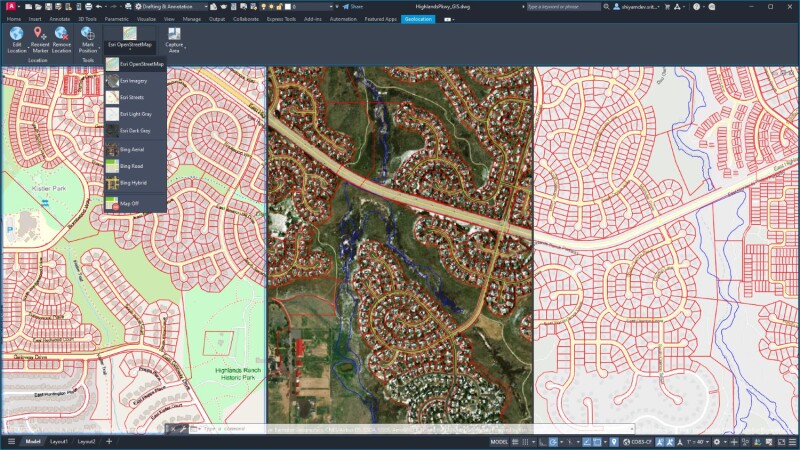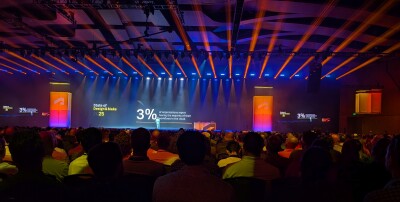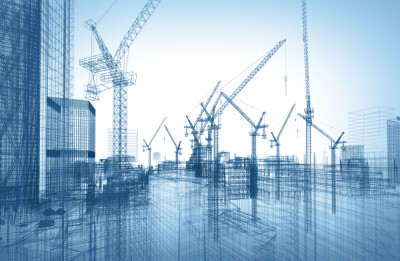Today, Autodesk has announced a series of new products and updates to their current offerings to keep up with some of the biggest demands in the AECO industry and beyond. In a blog post announcing these updates, Dan Lohmeyer, VP of Building and Infrastructure Design, said they “deliver new value today while developing a path to the future for the professionals who design and make the built world.” The features and updates include tools to monitor environment impacts, an expanded partnership with a geospatial giant, digital twin improvements, and of course new incorporations of artificial intelligence and machine learning.
We’ll start with the announcement of their carbon analysis product, Total Carbon Analysis for Architects, which allows planners and designers to analyze environmental impacts of projects throughout the pre-construction process. Total Carbon Analysis will be included within Autodesk Forma as well as Autodesk Insight, according to the company’s announcement. In Forma, AI will be employed to help architects analyze how different design ideas and decisions will impact carbon emissions for a project. Lohmeyer says the tool “offers architects unprecedented access to carbon insights through intuitive dashboards to evaluate the tradeoNs between embodied and operational carbon.”
Along with the Total Carbon Analysis tool, Autodesk also announced today an expansion of their “strategic alliance” with Esri, providing more comprehensive data for designing. Specifically, the expanded alliance will result in new integrations between ArcGIS Basemaps and Civil 3D as well as AutoCAD. Additionally, an updated integration between ArcGIS Online and Info360 Asset will provide key insights to water and wastewater network operations and maintenance teams more data on which to base their decision-making processes.
We know that one of the most notably growing spaces in the AEC industry is digital twins, and Autodesk has their Tandem product for that space. Today, the company announced that Tandem will be offered to subscribers of BIM Collaborate Pro as Tandem for AEC. Now, users will be able to add more data, including things like manuals and warranty information, all connected to the 3D model. They also add that they are looking to make data easier to work with, adding a new Markup Import tool into AutoCAD 2025 to maintain a live sync as markups from different stakeholders are added.

Finally, any announcement of new features and updates in the year 2024 will inevitably include capabilities built around AI and machine learning, and this is no exception. At Autodesk University, the company’s flagship annual event, the company leaned hard into the AI boom, introducing Autodesk AI and generally talking about how the technology will be incorporated into their products throughout the event. That does not seem to have been all talk, and they announced the latest incorporation today.
There is a series of AI-related announcements in the company’s blog post, starting with new capabilities for their ML Deluge tool. Providing quick analysis about how an area’s flood map based on designs, new updates will enable more interactivity with the tool, per Lohmeyer. “As you stamp ponds and swales onto existing surfaces, you’ll get an updated deluge map with an analysis running automatically in the background so you can quickly and easily understand the impacts of your drainage design.”
Autodesk also announced new AI capabilities within AutoCAD, including new Smart Blocks tools that are powered by Autodesk AI. Among the capabilities enabled here are Search and Convert, providing easy ways to search for objects within drawings and convert them to new, existing, or suggested blocks, as well as a new Object Detection tool to streamline drawing cleanup workflows.
All in all, these updates reflect Autodesk’s understanding of where the industry is today and where it is moving going forward. It’s hard to argue with these directions, too. Lowering carbon emissions is the number one item on the construction industry’s to-do list right now, and that effort involves all stages of a project going back to design. That makes a carbon analysis tool from Autodesk crucial to that mission. Likewise, access to geospatial data is increasingly valuable and simple for professionals, and this is just another example of it becoming more accessible as well. And of course, the AI boom is enabling new capabilities for every industry, and one should expect Autodesk to continue implementing more and more automated tasks.
“When I reflect on these releases and updates, I’m excited to see that how we work continues to evolve,” Lohmeyer said. “Sometimes innovation strikes fast. Other times, innovation arrives in increments, improving your experiences over time. These updates are a combination of these two types of innovation, bringing you ever closer to a better future.”






